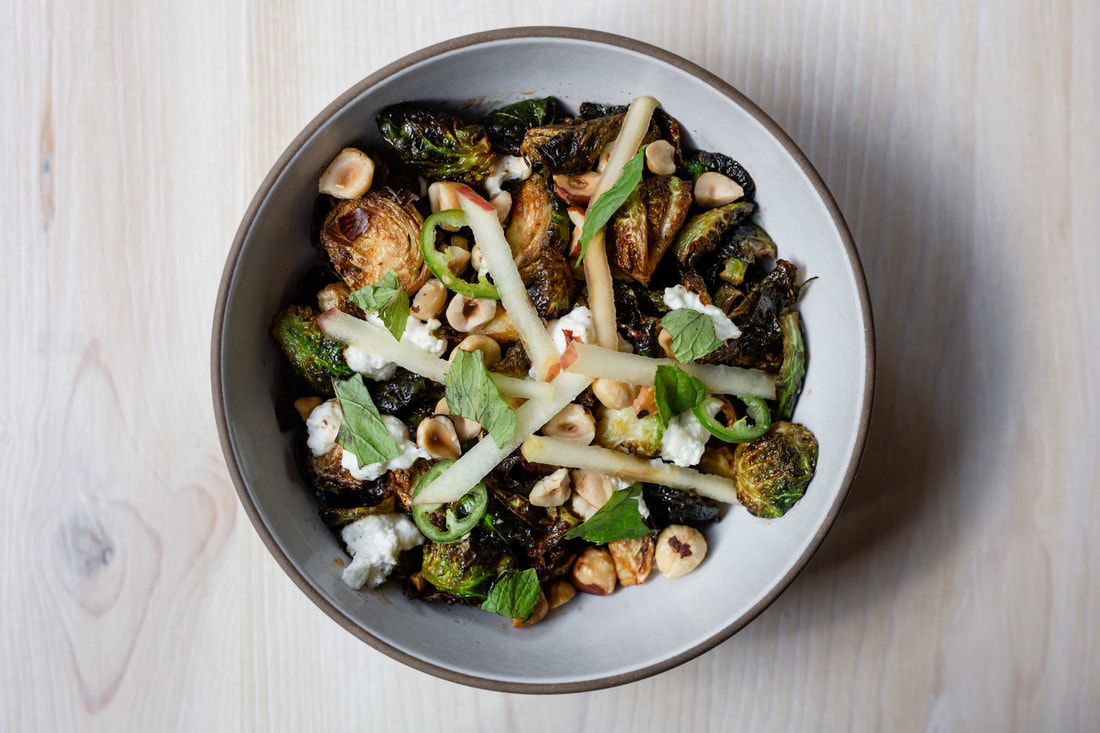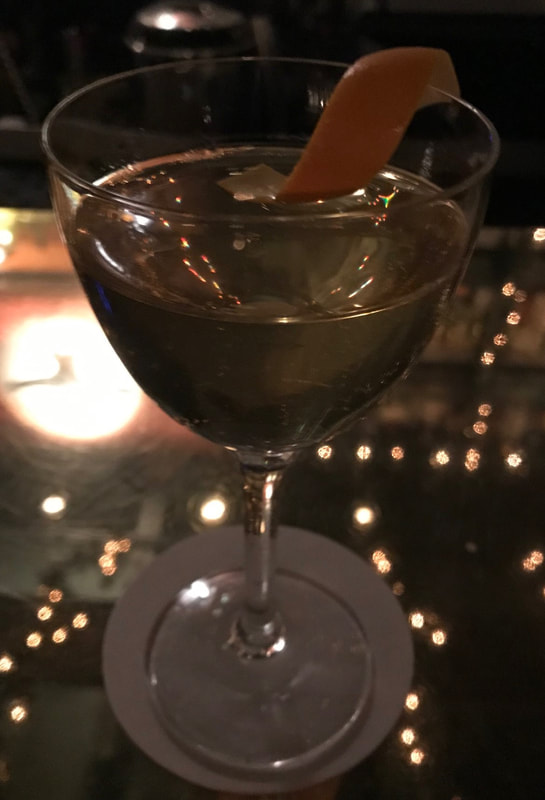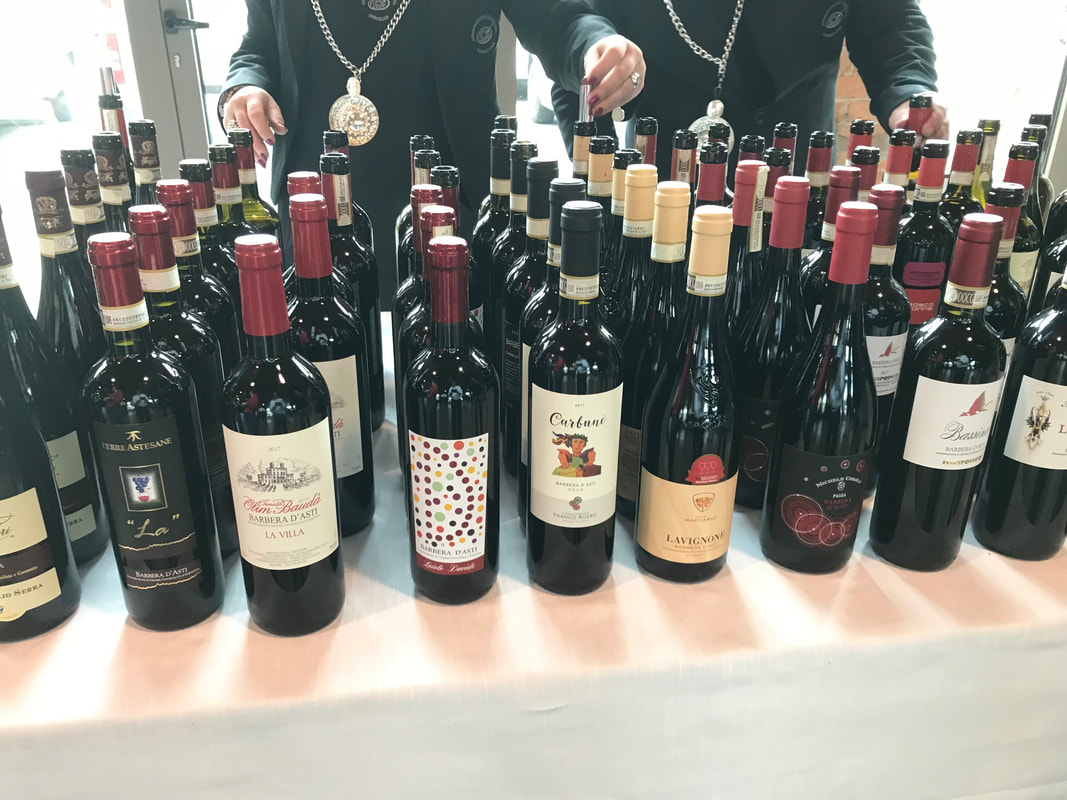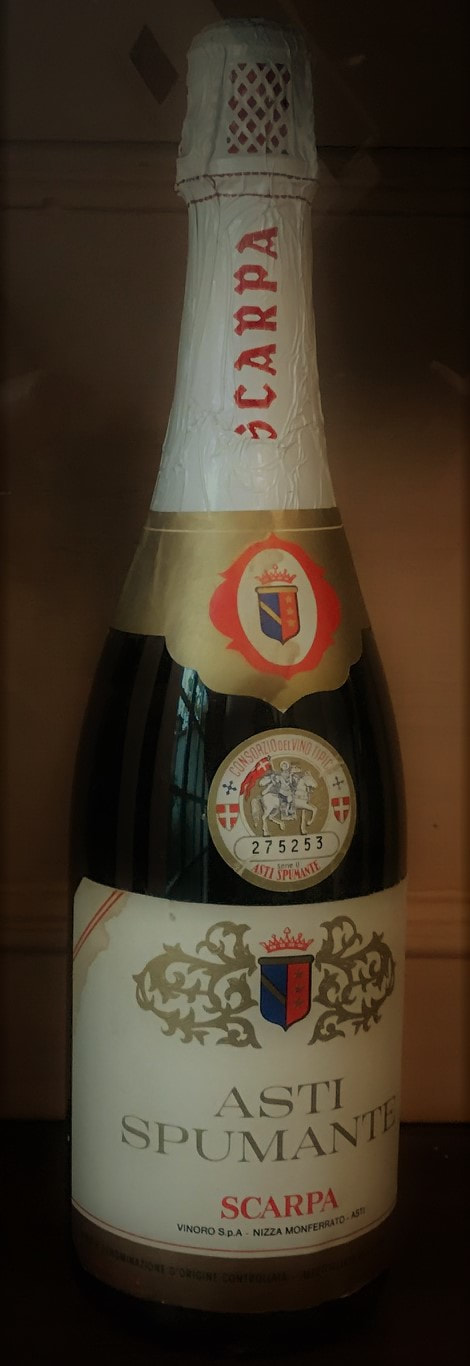To note, the average prices reflect a typical dinner, which might be an appetizer, side or dessert in addition to the entrée – or a suitable number of small plates – a couple of drinks, tax and a 20% tip. Below are the top ten new restaurants to open in Houston in 2018, listed alphabetically, and described in a sometime long-winded fashion.
Blood Bros. BBQ – $22 – This acclaimed barbecue pop-up opened their first restaurant in Bellaire just before the end of the year, much to the joy of local smoked meats aficionados and has been busy since the get-go. They are still learning the business, as one of principals quickly admitted to me during a visit – the line moved at a glacial pace – but the food, especially the meats, was first-rate. The requisite beef brisket is tender with wonderful, salty bark. The fatty ends were absolutely terrific, though the leaner interior tasted just a touch dry in spots, nothing that the welcome slices pickled red onions, fresh jalapeño or the table-top slightly vinegary hot sauce couldn’t amend. The straightforward cheese-studded pork sausage was almost too easy to eat. The pork ribs were moving as quickly as the brisket during my first time there, a good sign. The sides here are better than most that include creamed corn, a mustard-free potato salad with skin-on new potatoes, rich soupy beans, and macaroni and cheese. There are just four proteins to start – turkey, too – but I was told that meats will be added as the restaurant gets some more time under its belt. As good as it is now, this Bellaire smoker will likely be even a good deal better in a few months. 5425 Bellaire (at Chimney Rock), 77401, (832) 582-5992
Calle Onze – $50 – Tex-Mex might be considered passé in some quarters, but Calle Onze – and to a lesser extent Superica – shows that our long-loved regional cuisine can still entice with dishes that might not be new, but done in a more considered and an even refined way that can satisfy even more. An expansive cocktail program can add to that, too. Around the corner from the popular Eight Row Flint and taking its name from its location, 11th Street, Calle Onze, valet-only and all, and maybe in part because of the fine-dining-like valet-only, has been packed since opening in depths of the summer; a perfect match for those newer Heights residents who can afford those high six- and seven-digits digs. Fittingly slicker and nicer than just about any local Tex-Mex stop, the cooking is generally better, too, certainly more attractively plated. Grilled chicken in an enchilada typically means bland pieces of protein that rarely aid the dish. Not here, as the nicely marinated and attentively grilled chicken provides a nice complement to the cheese and quality tortillas. In addition to the familiar local Tex-Mex dishes like that, there are also one like smoked pork belly with pineapple and watermelon, duck carnitas, scallops with masa dumplings and crispy chicharron, and lobster and cheese ravioli. Ambitious might not be the proper adjective to describe the menu at Calle Onze, but it’s appealing at the very least. 222 W. 11th Street (just west of Yale), 77008, (832) 767-1417
Eunice – $90 – Serving Creole or maybe more accurately Creole-inspired fare, the restaurant that became Eunice had garnered very considerable buzz beginning in 2016 when it was going to be star New Orleans chef and restaurateur John Besh’s first foray into Houston. With Besh no longer actively involved in the restaurant group due to allegations of extensive sexual harassment, Eunice, named after the southern Louisiana hometown of its executive chef, Drake Leonards, fell a bit under the radar until almost its opening in October. And the gorgeous restaurant in Greenway Plaza – clean-lined and modern, yet quite inviting, comfortable and light – can also be easy to miss as its set off the intersection. A foray into the menu during its first month with a group of friends included the roasted oysters with bits of shrimp, blue crab, and then brown butter breadcrumbs, which were excellent, with the toppings working well with the moist, milky oysters. Maybe even more pleasurable were the chicken liver mousse served with a fig jam and thin slices of quality toasted bread. Mild yet flavorful, its similar in quality to the different, also exemplary adaptions of the dish at nearby Giacomo’s and Georgia James. The crispy Boudin Balls and Dan Dan Shrimp – named after a friend and former co-worker of the chef, not the Szechuan noodles – were both worth ordering. The first-rate entrées included hanger steak from the lunch menu, slices of duck breast with some dirty rice not that clearly described as “Duck Duck Rice / sweet potato, celery root, dirty rice,” and a sautéed Gulf black drum with some crab and brown butter. The only misstep was overcooked nearly mushy pasta substituting for the traditional rice in the shrimp etouffee. Ask for the rice. The friendly, attentive and knowledgeable service extended to the bar service, with an excellent martini for just $6 – a very welcome surprise since I paid for $14 for a simple and small gin-and-tonic earlier in the year at one of their sibling establishments in New Orleans. Eunice proved better and a better value, and a welcome addition to Houston. 3737 Buffalo Speedway (at Richmond), 77098, (832) 491-1717
Feges BBQ – $20 – A barbecue joint in a subterranean office food court? Yes, and it’s worth the hassle for non-Greenway Plaza workers to visit during the weekday when its open. And, yes, they are smoking meats onsite courtesy of a seemingly lengthy venting system. From the husband and wife team of Erin Smith and Patrick Feges, both of whom have impressive culinary CVs – and that includes Killen’s Barbecue for Feges – and it shows at this fairly humble counter-service spot where not only is the requisite beef brisket top-notch but its brethren are better than is typically found at a barbecue joint. Pork belly, turkey and pulled pork are a few of the other admirable smoked meats plus an interesting array of often piquant sides like sweet + spicy sprouts, braised collard greens, Moroccan spiced carrots, spiced cracklins, sweet potato + banana mashers and the yogurt + cilantro slaw. With the lengthy list of quality sides and a couple sides, you can even do well going vegetarian for lunch here, a welcome oddity among barbecue restaurants. But, if feeling less like healthy eating, there are also a trio of sweets including the PB&J Chocolate Cake that has drawn raves. 3, Greenway Plaza, basement food court (south of Richmond between Buffalo Speedway and Edloe), 77046, (832) 409-6118
Georgia James – $150 – Houston can actually use another steakhouse, especially if it is from Chris Shepherd and company. The reprise of the popular One Fifth Steak set in the former home of Underbelly offered a different take on the expected chop house that has managed to please both those customers attracted to the city’s more interesting fine-dining spots and those who consider a nice meal out a visit to a steakhouse. Likely with the latter group in mind, the menu is little less adventurous than its One Fifth predecessor, but it’s still the most unique steakhouse in the city. It starts uniquely with wonderfully crusty small loaf of bread from Bread Man Baking Co. that’s served with a jar of clarified butter infused with smoked brisket from nearby Feges Barbecue (Patrick Feges is an Underbelly alum). Though the expected strip (loin), ribeye and porterhouse are served, there is no filet. And no Caesar Salad to start, either. Customers should be more than satisfied with one of the other beefy options, including the succulent sirloin, the tender Wagyu Zubaton – cut from the upper portion of the chuck – or the 100-day-wet-aged hanger steak, a true onglet cut that is tasty but not really funky and a relative deal at $35. Somewhat differently, the restaurant sources from the regional 44 Farms and Marble Ranch and cooks most of the steaks in a cast iron skillet. The soft and juicy cast iron-cooked ribeye was delicious, if maybe with just a little more exterior fat than ideal. But it, and the Zabuton were both absolutely terrific on a subsequent visit, sporting wonderfully crusty, salty exteriors without as much fat for the ribeye and juicy, tender and flavorful meat. There are also bone-in versions for the bigger spenders including the long bone ribeye dry aged for 100 days for $150 and a daily butcher’s cut. The starters and sides are largely fun, intelligent riffs on the standards including domestic caviar and a raw bar with pricey seafood towers. The wine list is terrific, eclectic for a steakhouse, and with nice prices for the quality, which is what you can expect from Matthew Pridgen who also does the wines at UB Preserv and One Fifth. 1100 Westheimer (at Waugh), 77006, (832) 241-5088
La Lucha – $60 – Though this is supposed to take inspiration from the old San Jacinto Inn, a restaurant I loved as a kid, it doesn’t remind me at all of it. No matter. This place has often excellent, casual food that can also be a lot of fun in an attractive and vibrant setting that is a far cry from the San Jacinto Inn. It’s not surprising that this new place specializing in fried chicken and Gulf seafood joint occupying the space of the dearly departed Hunky Dory has a fine selection of oysters from the Gulf and a great happy hour special on those on the half-shell, as it’s siblings with State of Grace, which might have the best oyster program in the city. Though those bivalves are a definite attraction, the star of the menu might be the fried chicken, served in half or whole bird portions. The fried shrimp are also quite good, done a little differently than found elsewhere in town. Except for the full fried chicken and roasted oysters orders, the Texas Gulf classic redfish on the half shell, and the Louisiana caviar (bowfin) served with an onion dip and uber-processed Pringles, the dishes are under $20, well-suited for sampling and sharing. OK, the Pharmacy Burger might be to, tougher to share, but it’s terrific (and far better than any of the ones I ever had at the nearby Yale Street Grill). There are handful of house cocktails, though the list of wines is limited. Nicely, there are over twenty types of sparkling wines that include nice prices on good Champagne, which might be the perfect pairing for fried chicken, after all. 1801 N Shepherd (at 18th Street), 77008, (713) 955-4765
One Fifth Mediterranean – $110 – The third concept to occupy One Fifth, Chris Shepherd’s eleven-month restaurant in the former home of Mark’s, serves food largely inspired from the Levant and points west, Turkey and north Africa. The cuisines that have not been represented in fine-dining establishments here, and rarely in this country, but taking some cues from the lauded Zahav in Philadelphia, this is another successful turn of One Fifth with laudable, upscale interpretations of preparations of various cuisines of the eastern and southern Mediterranean. The light, fresh-tasting hummus was easily the best I’ve ever eaten as was their airy, house-made pita bread. When I visited, the Daily Hummus was topped with an as least as delicious braised lamb short ribs off the bone. There are several types of hummus preparations and other dips and spreads that can be a no-brainer to start a meal. With a number of these easily shareable dishes, including family-style large preparations like an entire fish and braised lamb, a visit with a few at the table can make for an especially pleasurable communal meal. The wood-burning oven used for the pita and other breads gets a lot of use, with fish, meat and vegetables appealingly cooked al ha'esh (on the fire). I was told that this current incarnation of One Fifth has resonated with local Persians, among others. For many not nearly as familiar with the items, one of the two tasting menus, at $60 and $75, might be the way to go. 1658 Westheimer (nearly at Dunlavy) 77006, (713) 955-1024
Shun – $110 – From the son of the owners of longtime favorite of Japanese transplants and visitors, Nippon in Montrose, Shun is something nicer, hipper and more ambitious than his parents’ comfortable stop. A little less traditionally Japanese, too, with locally attuned flavors and ingredients make their appearance in some of the dishes. With a mix of sushi and sashimi, grilled robatayaki items, and a grab-bag of Japanese small plates, the menu might be tough to navigate for some, but the servers are helpful guides. One of the highlights we were directed to on a recent visit was the Lengua Gyoza, a trio of big, soft and delicious dumplings filled with tender tongue meat from wagyu cattle – a far cry from what’s in cheap lengua tacos – and served with salsa verde in a ponzu mignonette. The pricey, but large pieces of nigiri sushi and sashimi are excellent, as you might expect with the experience at Nippon, with some sourced from more exotic waters. Fun and delectable rolls like the Sun Blast filled with salmon, apple, tobiko, micro cilantro, lime, spicy aioli and topped with a piece of crispy salmon skin might have more wide-ranging appeal. Shun can seemingly appeal to a range of customers with familiar items like tempura, miso soup, pork katsu, and sushi rolls, those interested in a meal of mostly sushi and sashimi, and there’s a separate sushi counter, or those wanting something more unique. The customers appeared to reflect that, with families with young children, middle-aged Inner Loopers along with plenty of Japanese folks. They all looked as happy we were, the highballs and well-compiled sake list helped see to that. 2802 South Shepherd (between Westheimer and West Alabama), 77006, (832) 409-5888
UB Preserv – $80 – Underbelly has moved down the street to a smaller, livelier and louder, space that was more deemed more appropriate – if maybe a little too small given that it’s seemingly always crowded – and is showcasing Asian influences even more and from a seemingly broader footprint. Not that the ever-evolving Underbelly got old or stale, but the move and new chef de cuisine, Nick Wong, an alumnus of David Chang’s Momofuku kitchens, has made its successor more interesting and a visit more exciting, and more fun. The many dishes among the two dozen or so that easily and smartly mix some of the different cuisines that get traction among Houston diners. Executive Chef Chris Shepherd showed over the tenure of Underbelly, and at the several-cuisines-at-once One Fifth Romance Languages, how he and the team can combine items from seemingly disparate cooking traditions into something sensibly delicious, which continues here. The menu skips merrily around the world for inspirations: China, Vietnam, Italy, Mexico, Mitteleuropa, Texas, Thailand, etc. The pork schnitzel was a favorite across the street. Here, the tender piece of bread pork is flavored with the spicy and sweet Korean gochujang sauce for a fun twist. If you have trouble deciding among the offbeat, tempting options, the four-course tasting menu is well-priced at $55. For their Sunday brunch, The Crispy Rice Salad is a star, featuring puffed and crispy grains of rice providing a welcome textural contrast to the array of fresh herbs and the bright ripe cherry tomatoes. As much attention and acclaim that Shepherd and the restaurants have received, they’ve never quite received their due for their excellence with vegetables. One example was The Tomato & Avocado Salad, an early brunch dish, that also came with a medley of well-chosen fresh herbs, wedges of ripe green avocado and even more tomatoes in hues of deep purple and robust red, all nicely ripe and tasting terrifically. It’s what you would expect from one of the city’s best. 1609 Westheimer (between Mandell and Dunlavy), 77006, (346) 406-5923
Wanna Bao – $40 – Yes, you should. Proclaiming itself on its signage as “Hearty Chinese Bistro / Dumpling House.” It is. And a good one at that, and in a hip, industrial-sparse bistro-like setting at the edge of Midtown is well beyond what would be typical of a similar place along Bellaire Boulevard, serving both dishes from Shanghai and the madly popular Szechuan region, Wanna Bao seemingly succeeds with both – as with both ends of its signage, the dumplings for certain. I really enjoyed their take on that Shanghai specialty, soup dumplings (xiao long bao), along with the piquant, even messier for me red oil dumplings. Those Shanghai dishes are done correctly and tastily from what I have heard from some Shanghai natives. And, for what it’s worth, Chinese and Chinese-Americans make up most of the patrons at this oft busy spot. But, even for casual fans of Chinese fare, there will be more than a few familiar items like Kung Pao Chicken, various types of fried rice, along with those steamed dumplings. 2708 Bagby (just before Tuam), 77006, (832) 623-7265
A Brussels sprouts dish at Eunice








 RSS Feed
RSS Feed

